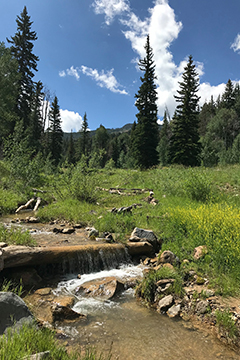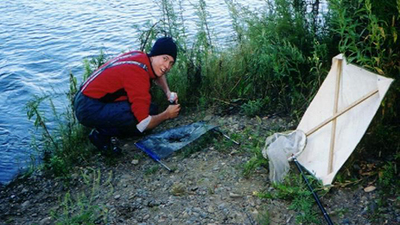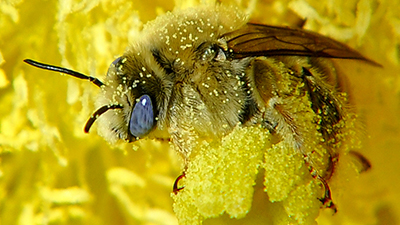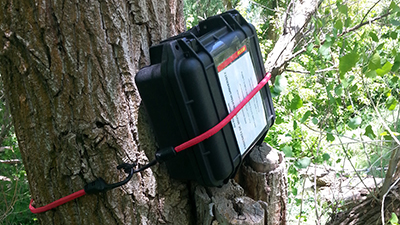プログラム調査日程・空き状況・参加費用等、海外調査に関するお問い合わせは、アースウォッチ・ジャパン事務局にて承ります。info@earthwatch.jp までお気軽にお問い合わせください。
Over 40 million acres of breathtaking public lands stretch across the varied landscapes of Utah, but little is known about the vast array of native bees reliant on this area and its governmental protections. How will these pollinators fare as non-native species, climate change, and other human influences alter the landscape?

Throughout the towering red canyons, verdant evergreen forests, and vast deserts of Utah, over 1100 species of native bees and other pollinators are hard at work. Ranging from chubby bumblebees to smaller species no bigger than the tip of your pen, these bees fly from plant to plant, taking with them samples of those plants’ pollen. But they’re also leaving something behind: DNA. As they pick up pollen, they shed some of their genetic material, turning each plant into a visitor book with each bee species leaving their signature.
Researchers know this record of pollinator and plant interactions exists, but they aren’t able to interpret it yet. Dr. Jackie Grant is working to change that by creating a reference database where researchers can look up the genetic signature of a bee and compare it to what they’ve found on a plant. This database will be particularly useful in southern Utah, where some scientists and commercial farmers are proposing to introduce invasive western honey bees to the pesticide-free protected lands in an effort to bolster plummeting populations. By better understanding the vast network of species interactions that native bees and plants rely on, Earthwatch teams will help to inform these key management decisions.
From the pristine alpine lakes to the sprawling volcanic fields to the trails meandering past the twisted bristlecone pines, you’ll work alongside a research team to track the biodiversity of these critical species, interpret the complex web of pollinator and plant interactions, and better predict how environmental stresses will affect different pollinator and plant species.
ボランティアの役割

Collect bees and other pollinators from pan traps, identify native bee species, and collect vegetation and environmental data.

You will help researchers collect four types of samples for genetic analysis: whole bees, pollen carried by bees, plant leaves, and flowers.

By setting up and taking down Acoustic Recording Units in patches of pollinator rich habitat.
